Written by R. Ann Parris on The Prepper Journal.
Curbside pickups can net preppers some handy materials. Sites like Freecycle and Craigslist and the local classifieds can be sources, but just driving around on our daily and weekly routines can be useful in scoring pickups as well. If we’re looking for a lot of something or something specific, we can also pick up a specific prepaid drop phone and staple some notices at stoplights and four-way stops – you’d sometimes be surprised what it will net, for nothing more than coming and hauling something away.
Swing sets and trampolines are two that we won’t see sitting by the curb on trash day, usually, but that we can check listings for and post our own about, with pretty decent results. They have a fair number of uses for preppers, as-is and for parts.
They do have some special considerations that other, smaller curbside pickups don’t require.
Prepping for Salvage
One, before we head out, we want to verify that we’re getting what we expect. Trampolines are pretty standard but swing sets can have metal, wood or plastic frames. We might have some use for wood, even if it’s “seasoned”, but the steel-aluminum pipe sets have the most uses and we’re not as likely to reap benefits from the plastic tot sets.
We might also want to plan for clothing and equipment to wade into overgrown areas (ticks, chiggers) and we may want to bring a hoe or trenching/tulip shovel to help free the legs if it’s been in place a couple of decades.
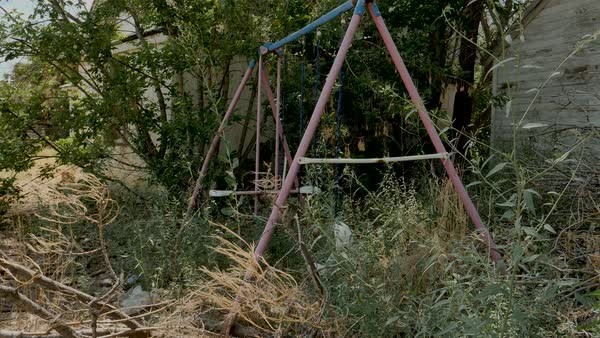
Multiple bodies are a benefit, even if 1-2 of them is really just a “hold this here” or “steady this, will you” type.
If we have two able bodies available and a trailer, flatbed, or stake truck, and we’re dealing with a swing set or relatively small trampoline, we may be able to just walk it up.
Most likely, though, we’re going to be taking it apart, at least partially. If we’re by ourselves, a pair of tires or dolly might be enough for a trailer, but it’s even more likely we’re going to be taking it apart.
These things have also probably been sitting out for a while. That expands our tool list beyond a pair of multi-tools.
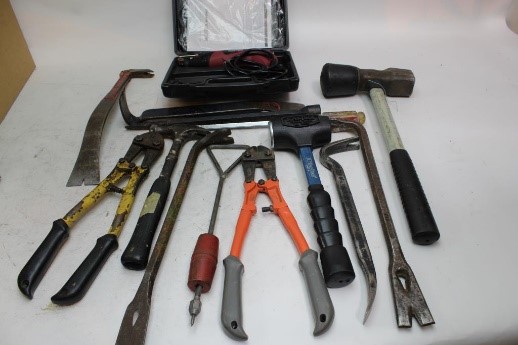
Since bolts have likely fused and we’re potentially dealing with rust, a hacksaw and-or bolt cutters can be biggies. A mallet or sturdy wrench can be handy for “gently” tapping pieces apart, especially with models that nestle pipes into each other.
Trampolines are actually really, really easy to get apart even by yourself, and since they’re typically shorter, will need a little less frame disassembly with a standard pickup, SUV, van, or full-sized sedan. However, many will still have those vicious springs attached.
If hands are going or there’s cold weather, the trampoline is a little rusty, and just to make things faster and easier, use pliers to hold or pull the mesh. Two pairs and pulling both toward each other works better yet.
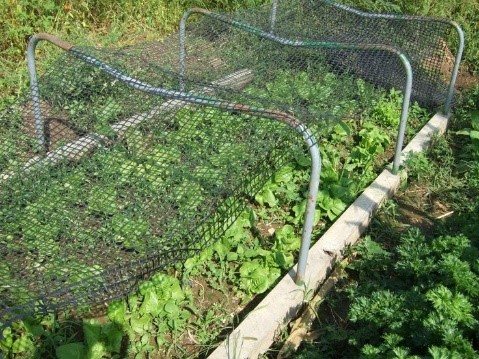
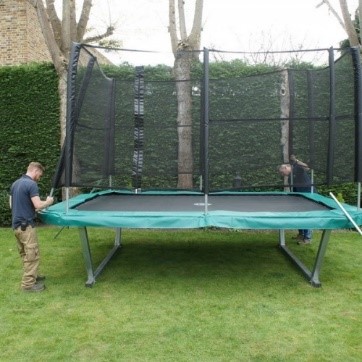
Parts & Pieces
Even a trampoline or swing set that’s incomplete or in rough shape has useful life left to give.
Legs from trampolines just need inverted to support insect netting, frost cloth, and shade cloth in gardens.
The surrounding mesh from some trampolines, the bounce mesh, and the cover pads some trampolines have can all be used as those insect meshes or shade cloth. They can also be used to give a pet or livestock shade in their runs.
Swing sets’ cross bars and attachments pipes can be used for garden bed covers, chicken moat runs, and ladder-type trellises for gardens. The smaller pipe can also be used for just about any kind of peg or stake depending on length and sturdiness, or get assembled into storage shelves.
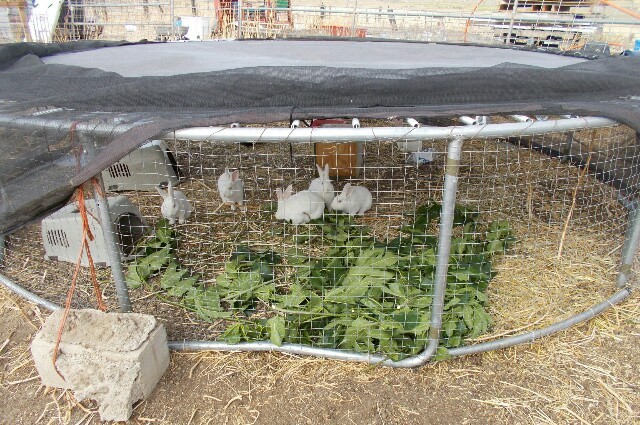
Super-Simple Pens & Shelters
Trampolines shine in one area particularly for as-is use and builds that require little work and effort. They are nearly ready-made pens. All we have to do is circle them with hurricane fencing, poultry mesh, or chain link.
In some situations, poultry, rabbits, and dogs will require covering them and-or adding dig barriers.
They can also work as lamb and kid pens, or be combined with other salvage parts to make a “safety pen” for small livestock to escape adult flock/herd members.
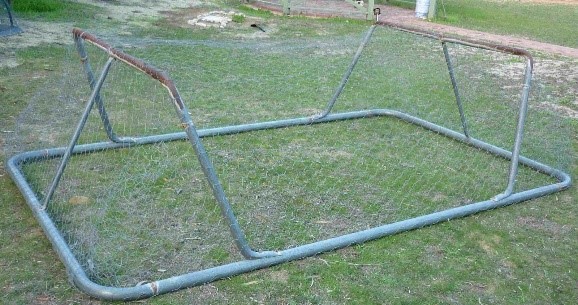
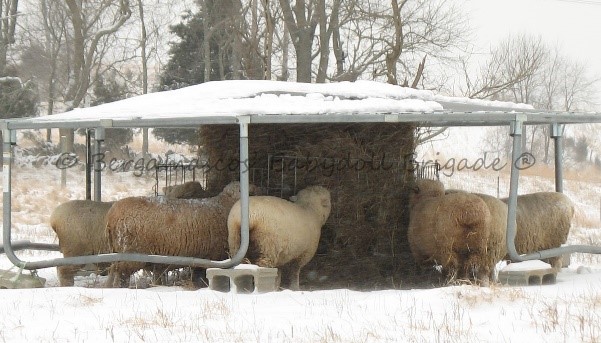
Flipped upside down, rectangular trampolines make excellent frames for mobile chicken tractors, with or without the addition of wheels. Trampolines are typically light enough, the larger versions can have those wheels and some tension-resisting supports added and be dragged easily as well.
With the legs sitting on some blocks or chunks of lumber, as-is trampolines make great feed-station and shade shelters for shorter livestock. With a tarp added, they’re good for rain as well as snow.
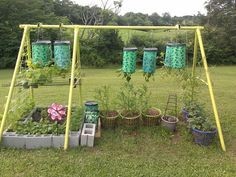
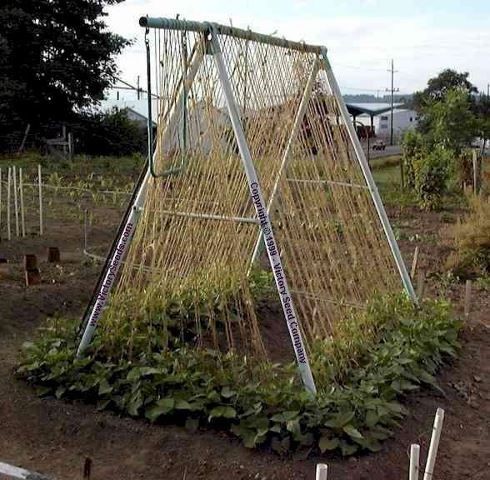
Swing Sets As-Is
A-frame swing sets have their own as-is uses. Just remove their swings and they create a space for a small raised bed, some pots and planters, and hanging baskets. Especially in smaller yards, the potential to go vertical can greatly increase our growing capabilities.
Use the holes or remaining bolts and hooks to string line, and they’re excellent bean tee-pees. With mesh instead of line, they’re squash and melon trellises instead – with enough space between the feet for planting a crop that will benefit from the shade those crops provide.
Even “well-loved” swing sets tend to be fairly sturdy, although we’ll have to give them some shimmy shakes and hang tests. Once we’re sure, those A-frames can be used to support other types of growing.
We can use them to brace soil-based vertical systems and the towers and lines for drip aquaponics, aeroponics, or hydroponics. They can also be supports for slightly canted hanging systems like ZipGrow type towers.
It requires a lot more of a build, but they can also form the base structure for horizontal (or barely tilted) biofilm hydroponics (there’s a long-term issue that develops with small spaces when we try to do biofilm aquaponics).
Soil adds more weight again, but they can also be used to create pyramid gardens with horizontal planters.
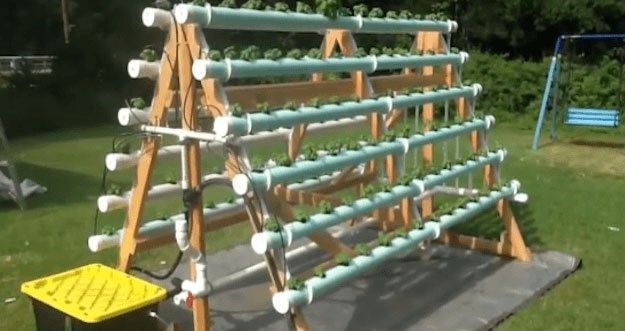
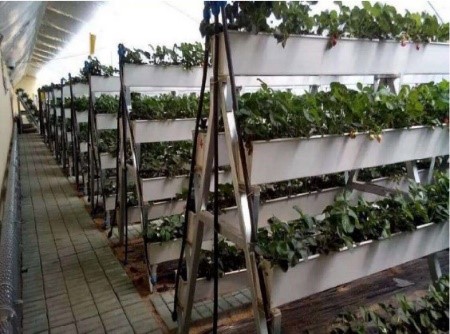
One benefit to those swing set A-frames is that we can easily throw some tarps, painter’s cloth, plastic or cloth row covers, or insect mesh over them (pad any bolts or hooks to protect the plastic and mesh). That buys us some extra season for any of their garden potentials.
We can benefit from the ability as well. Most swing sets have enough room underneath that with some mosquito netting, we can gain some outdoor sleeping space or a covered table for bug-free meals.
It also means they’re nearly ready-made firewood storage.
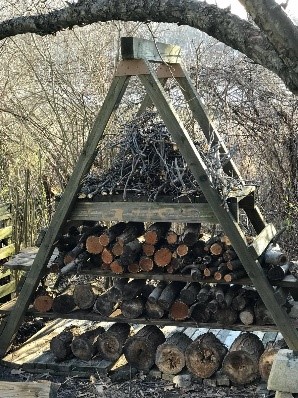
We can also use them near our butcher stations to hang deer and livestock. We can leave them as-is or use parts from some of the attachments to create a little more space at the top, and throw mosquito netting over to create a fly-free work space.
With that netting or garden mesh, we can also use swing sets to easily construct protected solar and slow-smoking drying racks and curing areas for fish, vegetables, fruits and meats.
They’re also super handy nearly-ready clotheslines, tall enough to keep blankets from trailing and with the cross spars excellent for expanding our drying capabilities for shorter clothes.
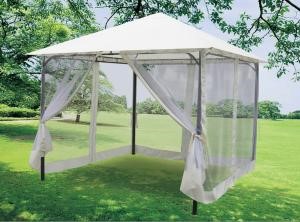
Shade Canopies
With some extension poles, we can turn trampolines into shade canopies for us and large livestock. As with swing sets, those can also be draped with mosquito netting or garden mesh to create a space for sitting or working without being harassed by flies and other insects.
Structural Builds
With a little more work for framing a door and structural support, with or without some small bookcases, we can easily turn old swing sets into more permanent mini greenhouses or winter covers for small ponds.

Round trampolines can also be turned into greenhouses or enclosed berry or garden areas. The simplest builds just involve reassembling it in halves with the legs facing inward and using a pole or timbers to add structural strength.
They can also be assembled in quarter-arcs for a longer structure with one flat/straight side. Those require additional materials (like from a swing set) or in some cases can be attached to an existing building or fence.
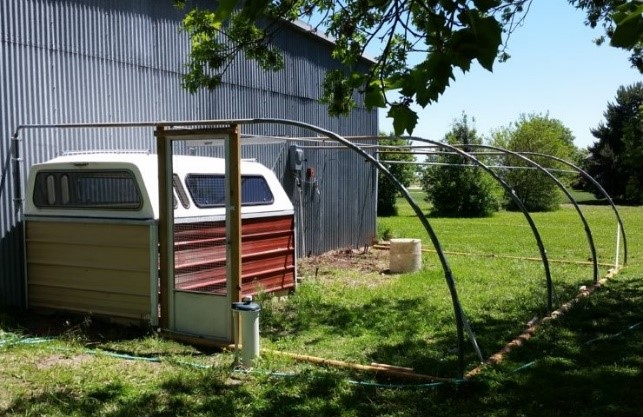
Swing sets and trampoline frames can also be assembled into animal coops and hutches.
Swing sets aren’t exactly deep, but the shape and sizes means it’s pretty easy to enclose a section to buffer wind and rain for small livestock without sacrificing much ventilation.
Sheets of plastic of metal and lumber can be used to enclose portions of a trampoline coop, although rain and air currents tend to still end up circling inside them. Buckets and boxes are also pretty easy fixes to allow small animals to share body heat and escape cool or wet weather without sacrificing ventilation, or we can just attach a standard coop or hutch and use it as a walk-in enclosure.
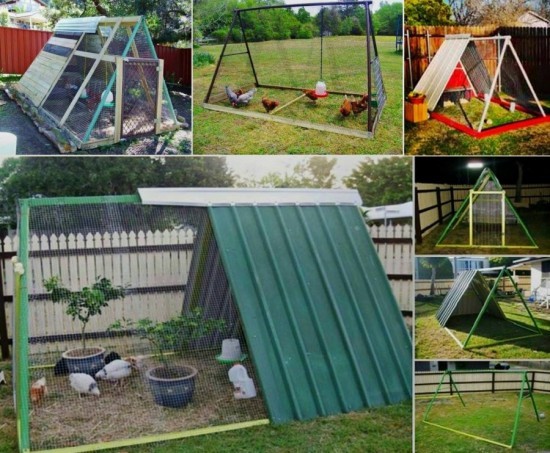
Both A-frame swing sets and trampolines can also be sheathed their entire lengths to form goat and calf sheds, feeding station sheds, and carports for mowers, ATVs, bikes, and lawn-garden equipment.
Swing Sets & Trampolines
Playground pickups do require some tools and planning for transportation, but many builds require little work and materials to create usable spaces and expand our preparedness. Other projects become a lot easier for people with little DIY experience or who are working primarily by themselves. With most, we can re-purpose our playground equipment again and again, breathing more and more life into something that would otherwise rust away in a backyard.
Beware at all stages, though. Hornets and wasps think highly of unused hollow pipes, too, and can be downright mean when defending their homes.
Follow The Prepper Journal on Facebook!
The post Pickups for Preppers – Swing Sets & Trampolines appeared first on The Prepper Journal.
from The Prepper Journal
Don't forget to visit the store and pick up some gear at The COR Outfitters. How prepared are you for emergencies?
#SurvivalFirestarter #SurvivalBugOutBackpack #PrepperSurvivalPack #SHTFGear #SHTFBag


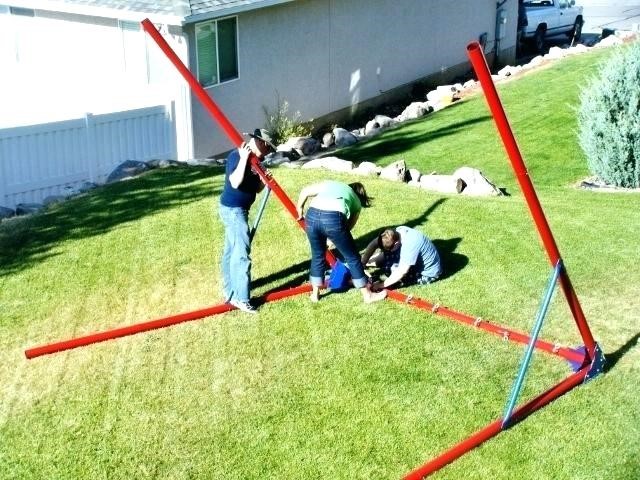
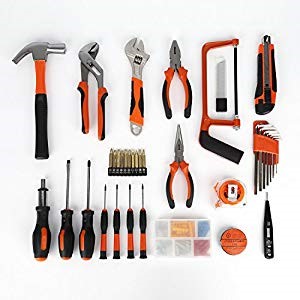
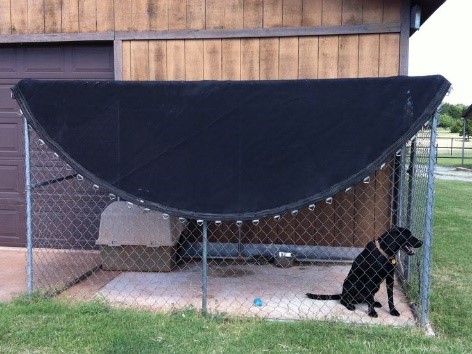
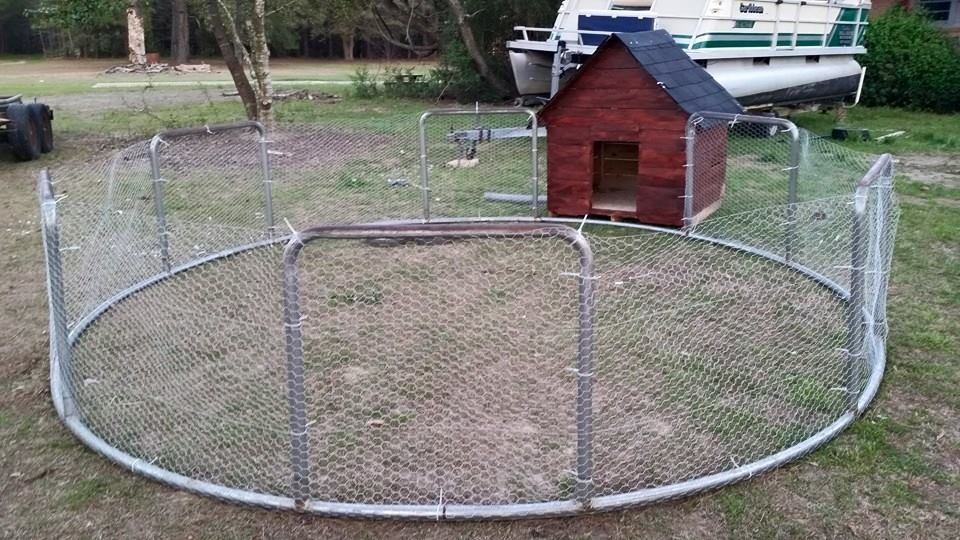
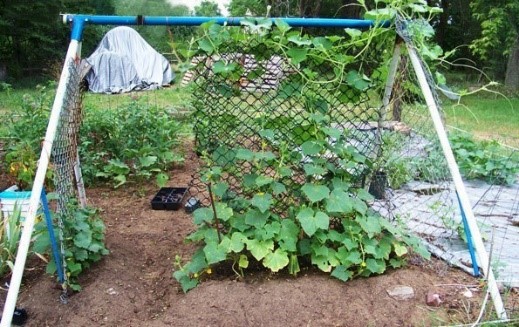
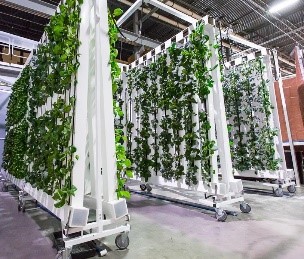
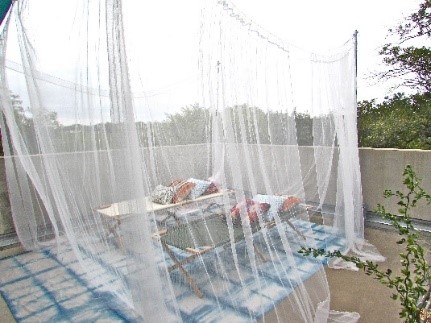
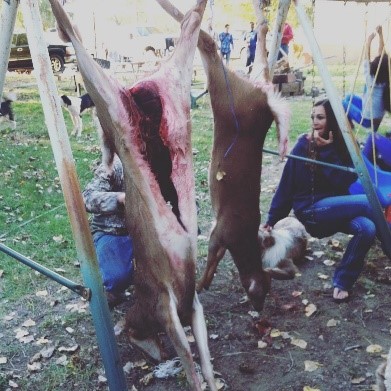
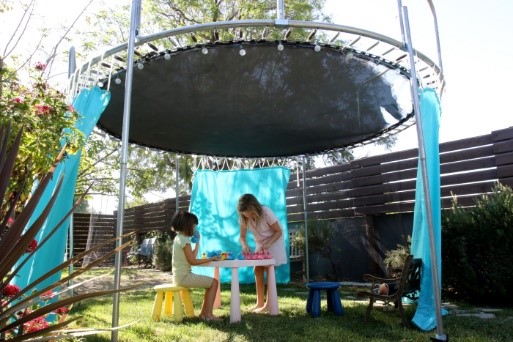
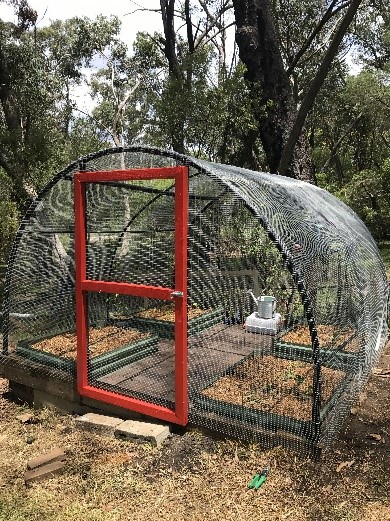
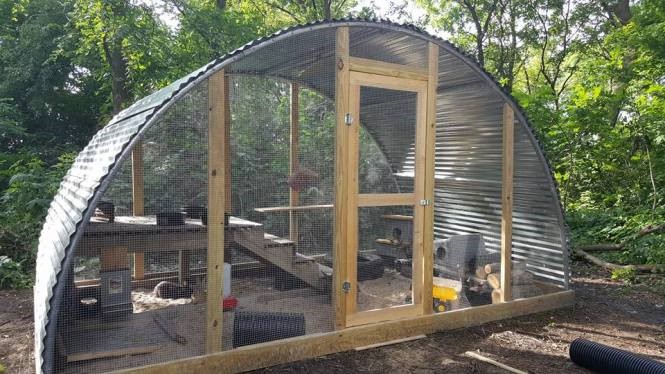
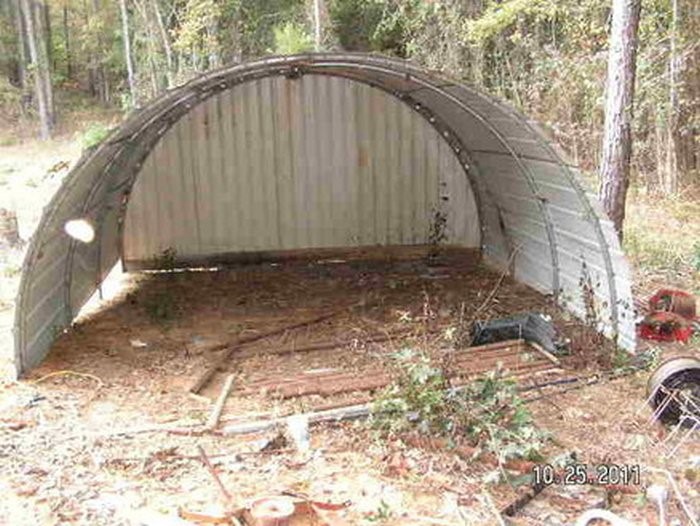
No comments:
Post a Comment